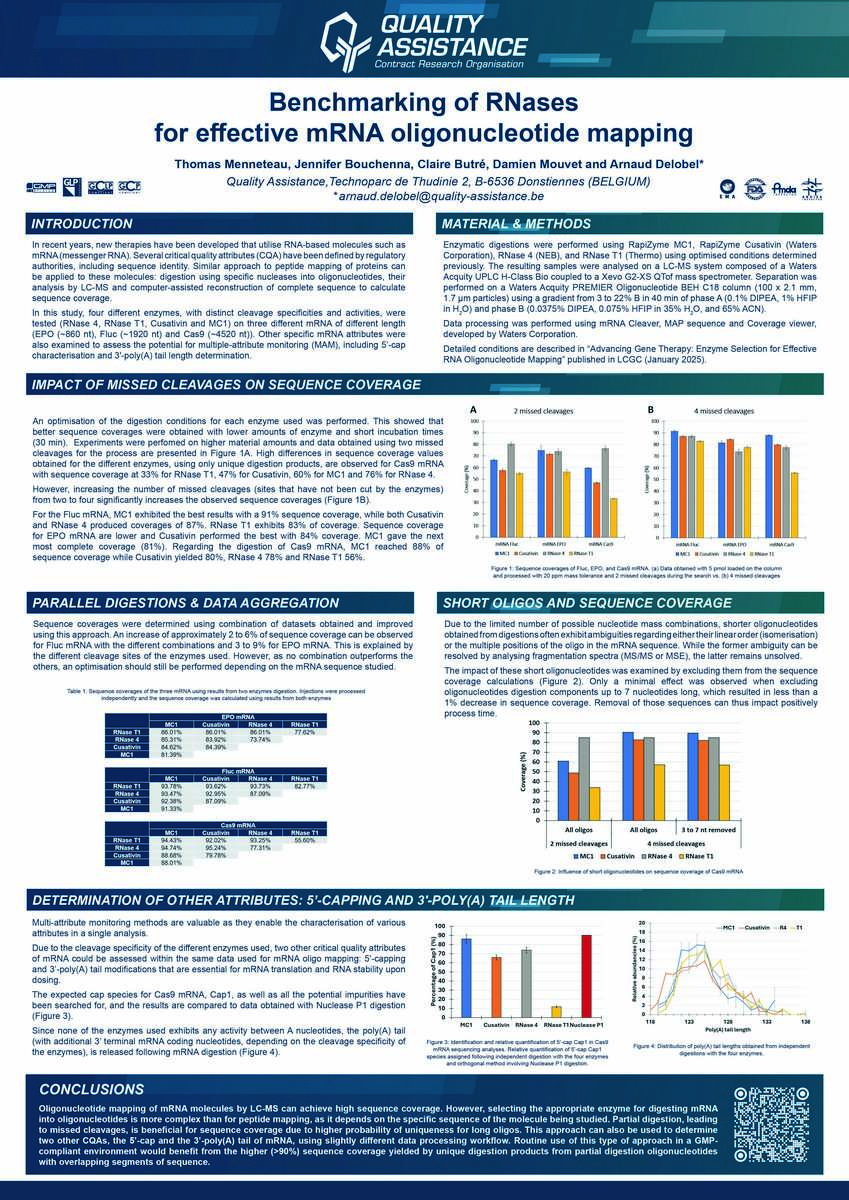Benchmarking of RNases for effective mRNA oligonucleotide mapping

In recent years, new therapies have been developed that utilise RNA-based molecules such as mRNA (messenger RNA). Several critical quality attributes (CQA) have been defined by regulatory authorities, including sequence identity. Similar approach to peptide mapping of proteins can be applied to these molecules: digestion using specific nucleases into oligonucleotides, their analysis by LC-MS and computer-assisted reconstruction of complete sequence to calculate sequence coverage.
In this study, four different enzymes, with distinct cleavage specificities and activities, were tested (RNase 4, RNase T1, Cusativin and MC1) on three different mRNA of different length (EPO (~860 nt), Fluc (~1920 nt) and Cas9 (~4520 nt)). Other specific mRNA attributes were also examined to assess the potential for multiple-attribute monitoring (MAM), including 5’-cap characterisation and 3'-poly(A) tail length determination.
Oligonucleotide mapping of mRNA molecules by LC-MS can achieve high sequence coverage. However, selecting the appropriate enzyme for digesting mRNA into oligonucleotides is more complex than for peptide mapping, as it depends on the specific sequence of the molecule being studied. Partial digestion, leading to missed cleavages, is beneficial for sequence coverage due to higher probability of uniqueness for long oligos. This approach can also be used to determine two other CQAs, the 5’-cap and the 3’-poly(A) tail of mRNA, using slightly different data processing workflow. Routine use of this type of approach in a GMP compliant environment would benefit from the higher (>90%) sequence coverage yielded by unique digestion products from partial digestion oligonucleotides with overlapping segments of sequence.